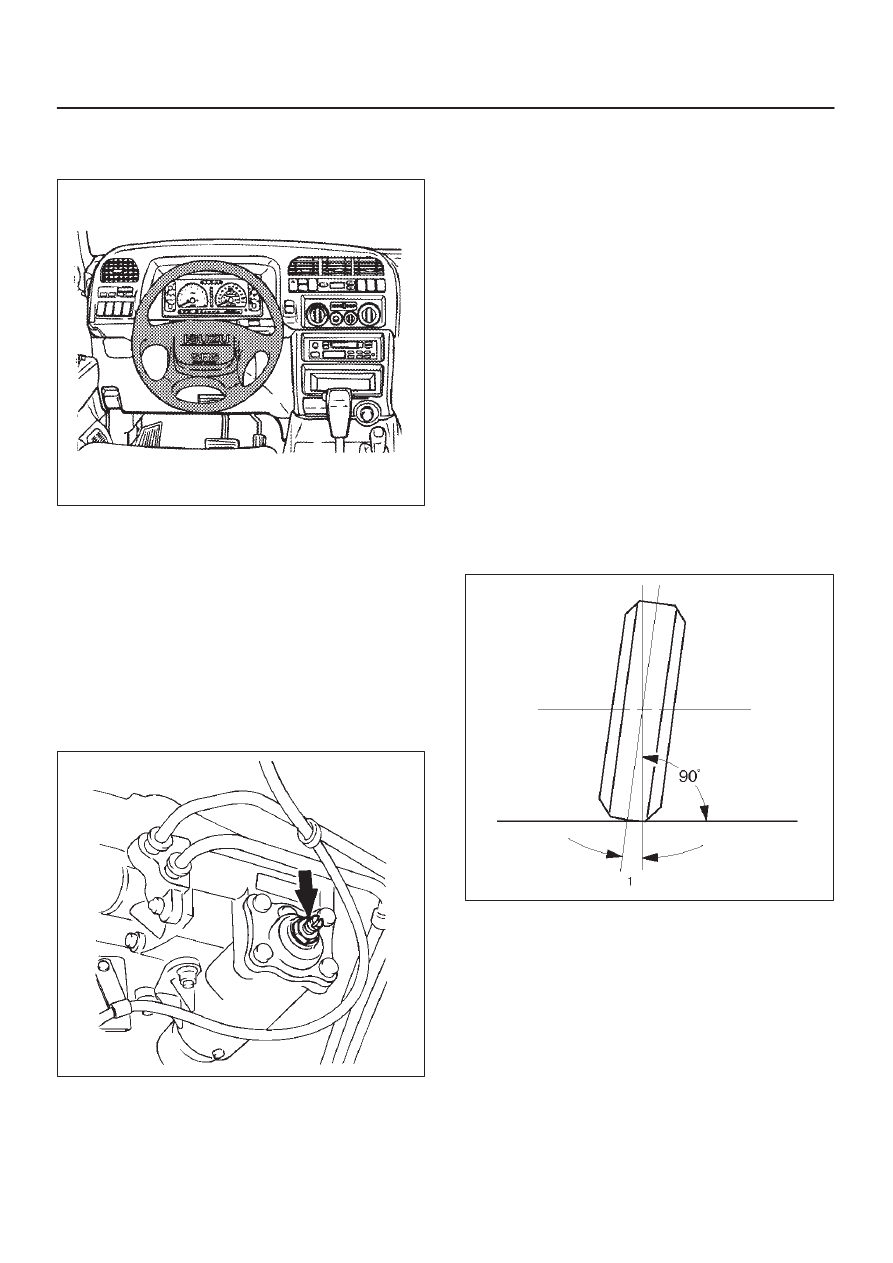Isuzu Amigo / Axiom / Trooper / Rodeo / VehiCross. Manual - part 571

POWER ASSISTED SYSTEM
2A–13
Steering Wheel Free Play Adjustment
Inspection
430RS015
1. With the tires in the straight-ahead position, check the
amount of steering wheel play by turning the wheel in
both directions until the tires begin to move.
NOTE: The wheel free play should be checked with the
engine running.
Free play: 0 – 30 mm (0 – 1.18 in)
2. Also check the steering wheel for play and looseness
in the mount by moving it back and forth and
sideways. When test driving, check for hard steering,
steering shimmy and tendency to pull to one side.
Adjustment
431RS001
1. Align the front wheels properly in the straight ahead
position.
2. Loosen the lock nut on the adjusting screw of the
steering gear.
3. Turn the adjust screw clockwise to decrease free play
or counter-clockwise to increase.
4. After check of specified free play, tighten the lock nut
to specified torque.
Torque: 41 N·m (30 lb ft)
Front End Alignment Inspection and
Adjustment
General Description
“Front End Alignment” refers to the angular relationship
between the front wheels, the front suspension attaching
parts and the ground.
Proper front end alignment must be maintained in order to
insure efficient steering, good directional stability and to
prevent abnormal tire wear.
The most important factors of front end alignment are
wheel toe-in, wheel camber and axle caster.
Camber:
This illustration is viewed from the front of the vehicle.
480RS004
Camber is the vertical tilting inward or outward of the front
wheels. When the wheels tilt outward at the top, the
camber is positive (+). When the wheels tilt inward at the
top, the camber is negative (–). The amount of tilt
measured in degrees from the vertical is called the
camber angle (1). If camber is extreme or unequal
between the wheels, improper steering and excessive tire
wear will result. Negative camber causes wear on the
inside of the tire, while positive camber causes wear to the
outside.